
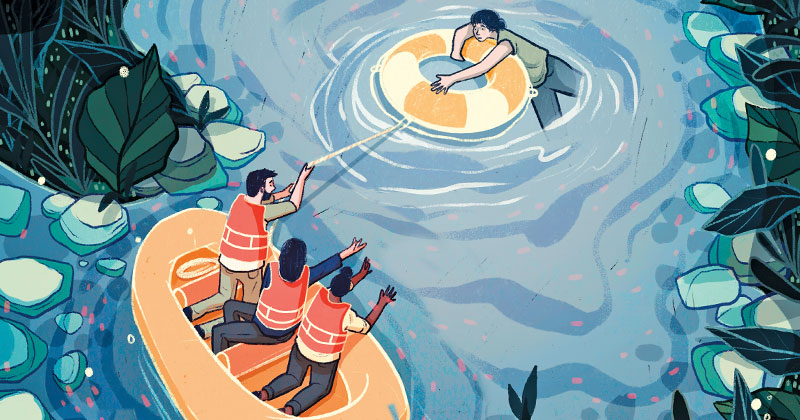

The Mental Health Crisis
UD is giving plugged-in, stressed out students unprecedented support
December 14, 2020
The digital natives are getting sick.
It could be argued that the illness has always existed, but Brad Wolgast shakes his head and sighs. “No,” he says. “Kids have not always been this way.”
Stressed, overwhelmed and prone to the complexities of a growing body and brain? Of course. But a year of confounding, world-bending disasters has pushed demand for mental health services to unprecedented levels on many U.S. college campuses, driven by an upswing in student depression and anxiety that already had been steadily climbing over the past decade.
As director of UD’s Center for Counseling and Student Development, Wolgast has watched it all unfold. Since 2010, UD has witnessed a 30% increase in the number of students who visit the Counseling Center; a 32% increase in the number of individual sessions; and an 81% rise in the number of crisis appointments in the past three years alone. It chillingly correlates with advancements in technology, communication and connection, Wolgast says.
“Depression is a constant among students,” he adds, “but 60% also describe feeling anxious, stressed or worried. These numbers were much lower 20 years ago.”
Researchers often point to the past decade as the start of technology’s contradictory effect of connection and isolation. Instagram launched in October 2010, just as today’s college students were hitting puberty. Months later, Snapchat arrived.
“In-person engagement has been replaced with digital interaction,” says Wolgast. “Students today are spending less time with peers, and more time online.”
Carefully managed profiles can often make users feel insecure, inadequate and alone, Wolgast adds. Self-worth is validated through “likes” and followers. Young people, especially young women, are confronted with unrealistic standards of perfection.
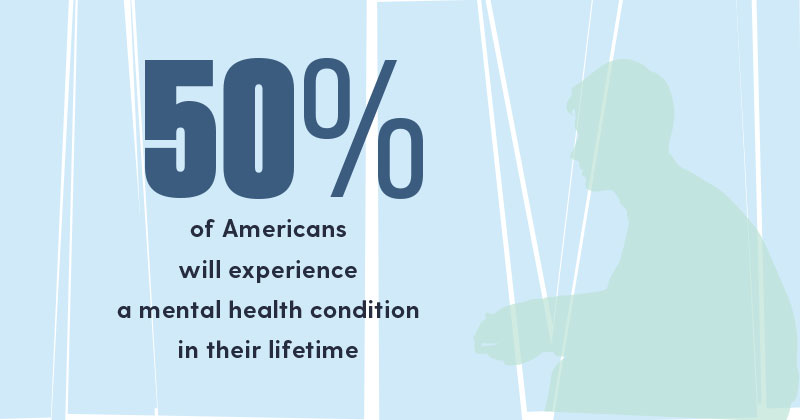
It scares Wolgast. It’s not only what he sees at work, but what exists in national data. Consider the suicide rates for children 10-14, which declined from 2000 to 2007, and then nearly tripled from 2007 to 2017.1 Or the fact that emergency department visits for self-inflicted injuries, a strong predictor for suicide, were relatively stable before 2008, but jumped 18.8% annually from 2009 to 2015 for females 10 to 14.2
The good news: Today’s students are aware of their options, and eager to seek help. The University is also well into an expansion of services that began long before COVID-19. This spring, students will begin getting support at the Wellbeing Center at Warner Hall, an $18 million refurbishment of a historic residence hall that will become the campus center for health and well-being resources.
“Our most important priority is helping students succeed in all aspects of their careers and lives,” says UD President Dennis Assanis. “We want students to reach their full potential here on campus and pursue fulfilling lives long after graduation.”
Wolgast echoes this sentiment. “College is when you’re figuring a lot of things out, and it’s simultaneously the time when mental health issues often begin to show up,” he says. “That makes it a prime opportunity for change; for helping students embark on a healthy path forward.”
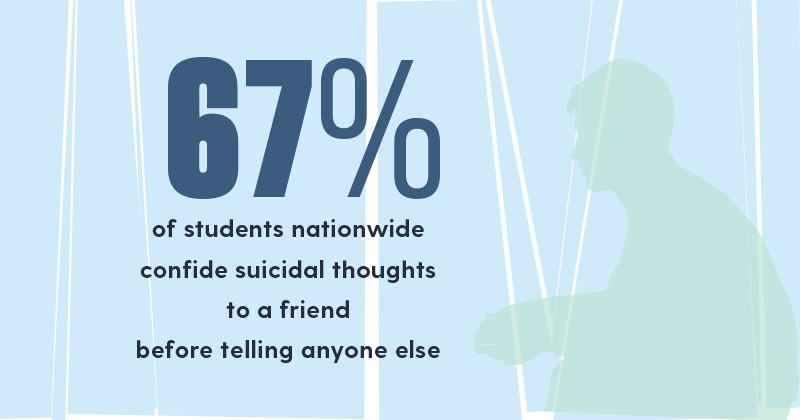
Increased visibility and community support
If the past decade has been marked by terrifying trends in adolescent mental health, it has also witnessed encouraging solutions.
Across campus, students are leading an effort to destigmatize mental illness and make emotional wellness a critical element of the college experience, beginning with the peer support model that UD’s own Rita Landgraf, EHD80, helped pioneer.
As former state secretary of Health and Social Services, Landgraf developed peer programs to help Delawareans suffering from addiction. This evidence-based treatment approach is akin to group therapy, where those with similar struggles share their experiences in a safe, welcoming, stigma-free space.
Examples of such campus programs can be found in registered student groups like Active Minds, Friends 4 Friends and EmPOWER, which have all launched in the past 10 years to raise awareness of student mental health.
Darian Elmendorf, BE19, credits Friends 4 Friends with saving his life. In the midst of a major depressive episode, he recalls looking at the candles on his 18th birthday cake, and thinking, “This is it. If this year doesn’t get better, it will be my last.”
It was only through his involvement with the Friends 4 Friends student group—with hearing other students’ stories, each one beginning with the words, “I’ve never shared this in front of someone else before”—that he realized he wasn’t alone.
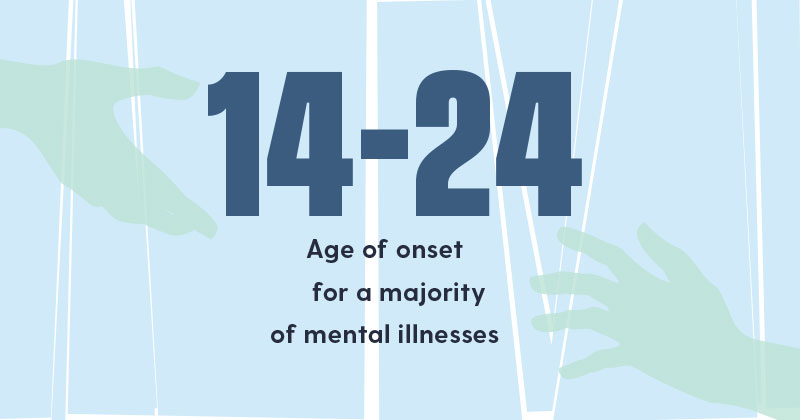
“Our generation is starting to talk about it a lot more,” says Elizabeth Rodenbach, EOE21, vice president of Active Minds, a national mental health advocacy group that established a UD chapter in 2014. “Much of what we do is to help other students know that they’re not alone.”
In her early days at school, fellow Active Minds member Olivia Chowdhury, AS23, would scroll through Instagram and feel a knot tighten in her stomach. “I had a rough time adjusting and making friends, especially when it seemed like everyone else was having a great time.”
“It’s easy to hide behind a computer,” adds Hayley Kutcher, AS21, vice president for Friends 4 Friends. “When you work to have open discussions, you find that everyone is dealing with the same problems and pressures.”
In typical semesters, students can hold biweekly meetings, or host craft nights and other activities to help decompress.
Peer support, says nursing professor Cathy Heilferty, is critical.
“Students today integrate helping others into everything else they’ve got going on,” she marvels. “I am in awe of what they’re doing.”
Along with advising the Active Minds student group, Heilferty has helped develop a peer support program for Sean’s House, a 24/7 community center for young adults struggling with depression or other mental health issues.
Although Sean’s House is not directly affiliated with the University, Wolgast says he sees it as a welcome resource. “There is no shortage of need,” he says. “Every investment helps.”
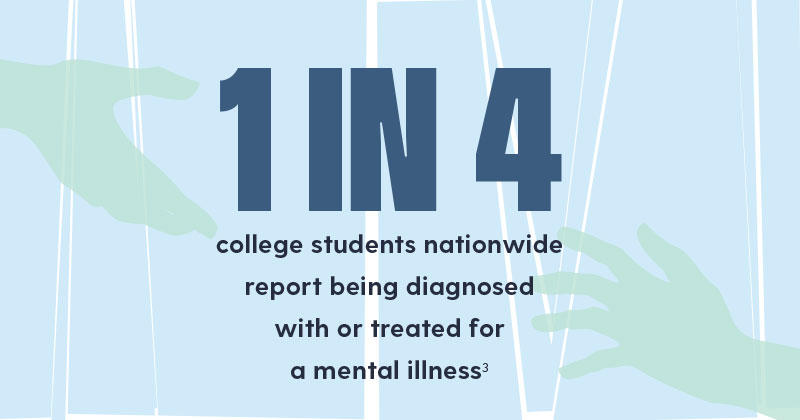
Mental Health in 2021
Robin Gordon is one such investor in student mental health.
“I’m a real believer in finding the good in every human being and helping them feel good about themselves,” says Gordon, whose daughter Brianna is a current junior. “Besides academics, I think mental, emotional and physical wellness the most important part of a school system, and I’m so delighted UD is making it a priority.”
Her philanthropic donation to the Wellness Center at Warner Hall has helped create a more comfortable, destigmatizing space for students to get resources, from individual counseling to group mindfulness sessions.
“My vision for the space is a place where all students feel good about themselves there and see it as a home away from home,” she says.
Wolgast and colleagues share this vision, though they expect the demand for mental health services to only increase, as this past year has given most everyone on the planet a bumpy psychological ride.
“Personally, I’m lost,” says Kelly Marzoli, BE18. “Professionally, I’ve never been busier.”
As COO of the Mental Health Global Network, LLC, she and co-founder Juliet Meskers, AS19, have trained hundreds of staff and students across the country on mental health services. They offer an evidence-based, two-hour training program on how to recognize warning signs of mental illness, and how to connect people to available treatments and resources.
It is a mission with tragic roots. In 2016, the two women lost their friend and UD classmate Connor Mullen to suicide. Their grief would inspire action, culminating in the Friends 4 Friends student group.
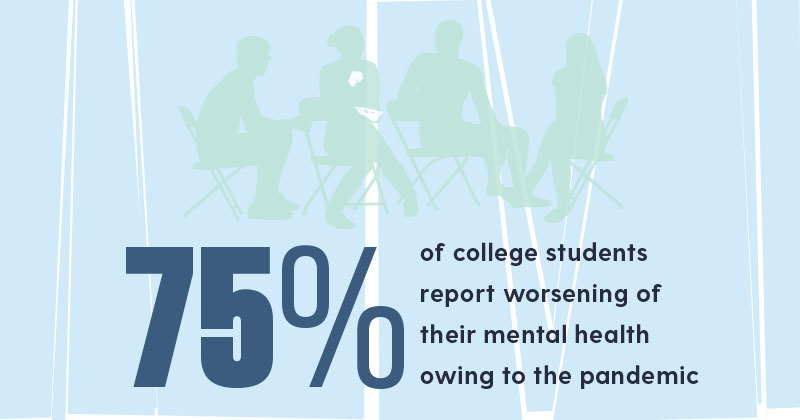
“Friendship plays an important role in mental health,” explains Marzoli. “It can be an effective tool in combating this public health crisis.”
And focusing on mental health can, in turn, help combat the harmful effects of digital addiction on the developing brain: the thirst for instant gratification; validation in the form of “likes;” fear of missing out.
“By focusing on mental health and learning positive ways to cope, our lives feel more accomplished and meaningful,” she says. “We’re not succumbing to social norms and expectations that are difficult if not impossible to meet.”
It’s something her late friend would have liked to see, Marzoli believes. “He would be doing this if he were here,” she says.
Instead, Connor Mullen’s legacy, like Sean Locke’s, lives on in the lives that may be saved through education, programing, resources and support.
And even as technology poses dilemmas, it offers some solutions.
In the School of Nursing, Heilferty has launched weekly grief support sessions, and the counseling cener has ramped up its online efforts.
The increasing digitization is a source of ironic optimism for Wolgast. “We all recognize the hollowness of the Internet,” he says. “Human interaction is what makes life most interesting and engaging. We all want it back.”
Contact Us
Have a UDaily story idea?
Contact us at ocm@udel.edu
Members of the press
Contact us at 302-831-NEWS or visit the Media Relations website


